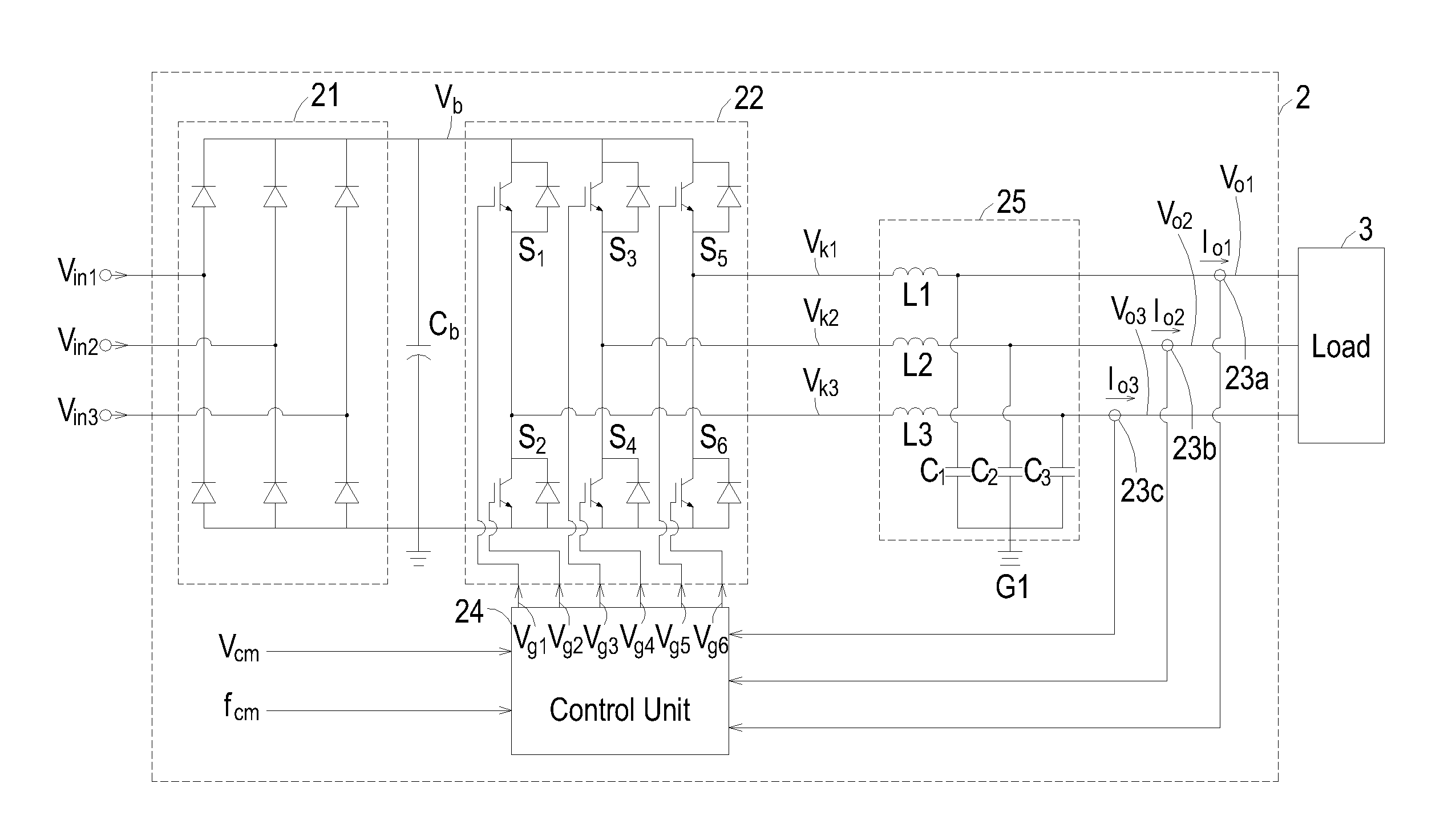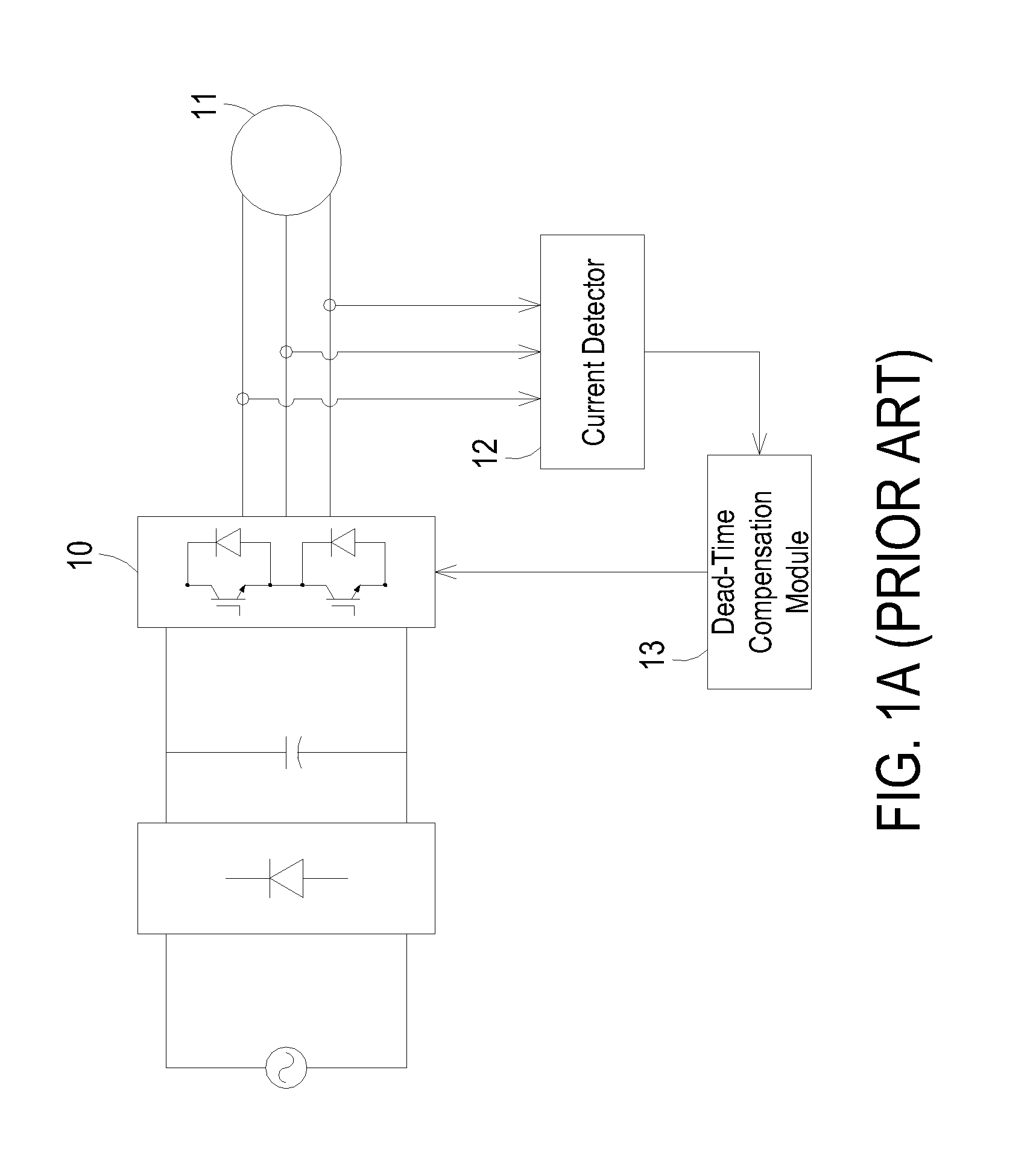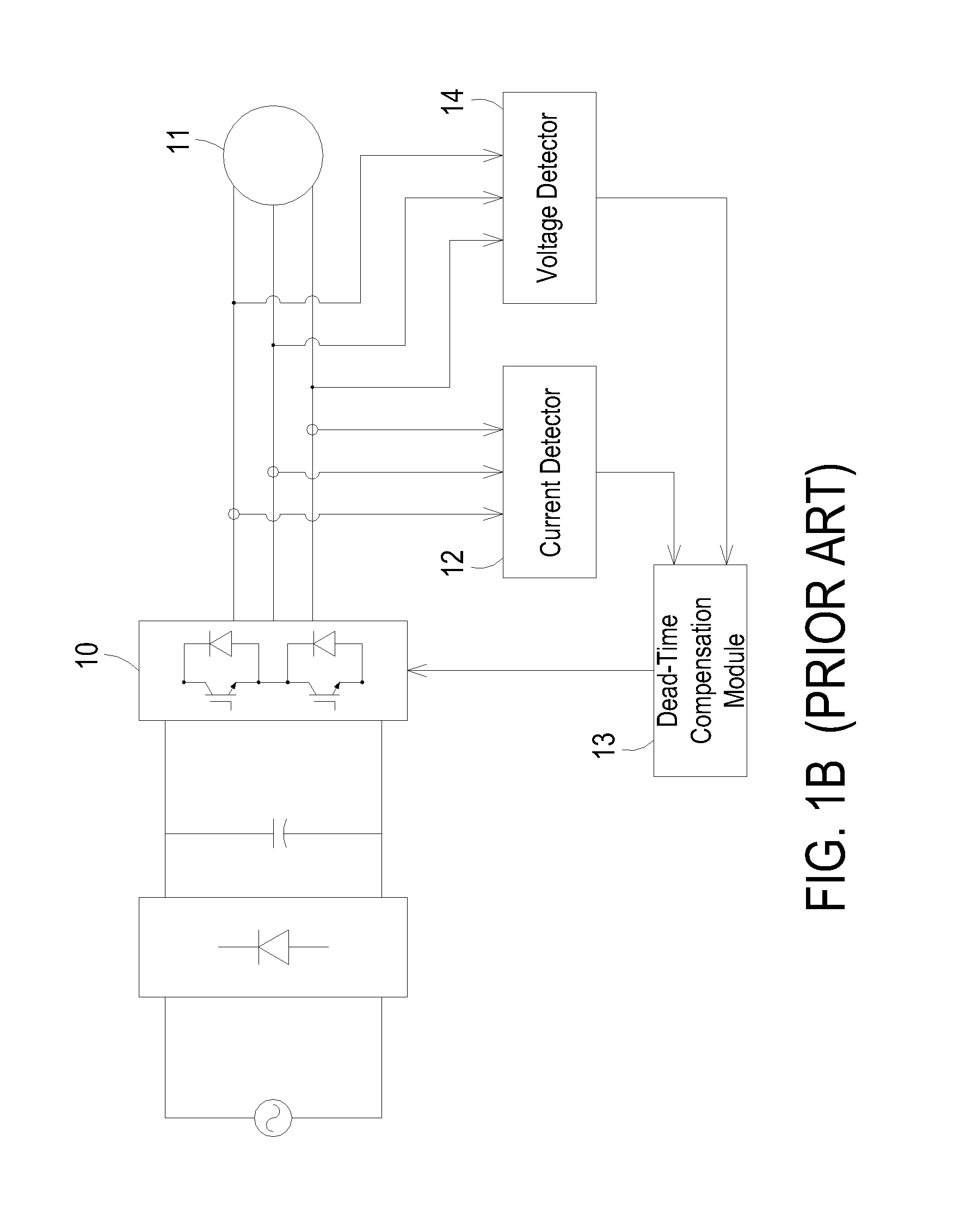Driver having dead-time compensation function
a dead-time compensation and driver technology, applied in the field of drivers, can solve the problems of significant voltage drop of the switch of the inverter under low frequency and light load condition, poor performance of the scalar control in terms of speed dynamic response, speed ratio control, etc., and achieve excellent insusceptibility to frequency fluctuation and low cost
- Summary
- Abstract
- Description
- Claims
- Application Information
AI Technical Summary
Benefits of technology
Problems solved by technology
Method used
Image
Examples
Embodiment Construction
[0017]An exemplary embodiment embodying the features and advantages of the invention will be expounded in following paragraphs of descriptions. It is to be realized that the present invention is allowed to have various modification in different respects, all of which are without departing from the scope of the present invention, and the description herein and the drawings are to be taken as illustrative in nature, but not to be taken as a confinement for the invention.
[0018]Referring to FIG. 2A and FIG. 2B, in which FIG. 2A shows the circuitry of the driver having dead-time compensation function according to an exemplary embodiment of the invention, and FIG. 2B shows the block diagram of the control blocks within the control unit according to the exemplary embodiment of the invention. As shown in FIG. 2A, the driver 2 having dead-time compensation function according to the invention is used to receive a single-phase or a three-phase input voltage Vin1-Vin3 from a power supply system...
PUM
 Login to View More
Login to View More Abstract
Description
Claims
Application Information
 Login to View More
Login to View More - R&D
- Intellectual Property
- Life Sciences
- Materials
- Tech Scout
- Unparalleled Data Quality
- Higher Quality Content
- 60% Fewer Hallucinations
Browse by: Latest US Patents, China's latest patents, Technical Efficacy Thesaurus, Application Domain, Technology Topic, Popular Technical Reports.
© 2025 PatSnap. All rights reserved.Legal|Privacy policy|Modern Slavery Act Transparency Statement|Sitemap|About US| Contact US: help@patsnap.com



